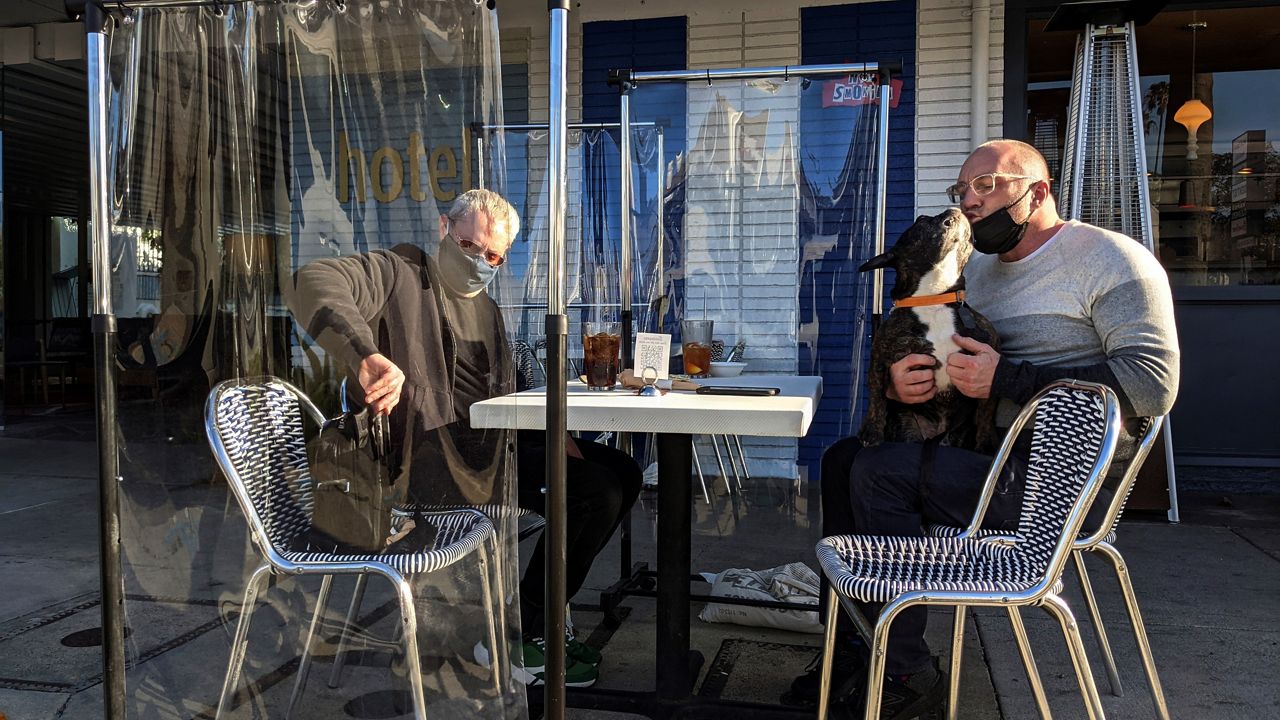LOS ANGELES (CNS) — Los Angeles County this week crossed the milestone of administering 3 million doses of COVID-19 vaccine, and the county's science officer said Friday planning is under way for an anticipated dramatic increase in vaccine supply in hopes of eventually doling out 1 million doses per week.
What You Need To Know
- The county currently has the capability of administering about 630,000 doses per week
- Due to limited supply, only about 300,000 to 350,000 doses are actually being administered per week
- Next week, the county will only be receiving about 280,000 doses
- That number will be augmented by supplies sent directly to some providers, such as the federally operated site at Cal State Los Angeles
The county currently has the capability of administering about 630,000 doses per week, but due to limited supply, only about 300,000 to 350,000 doses are actually being administered per week. Next week, the county will only be receiving about 280,000 doses, although that number will be augmented by supplies sent directly to some providers, such as the federally operated site at Cal State Los Angeles.
Dr. Paul Simon, chief science officer for the county Department of Public Health, said Friday that given the progress already being made in vaccinations, if supplies dramatically increase by late April or early May — as predicted by President Joe Biden — the county could move rather quickly through the rest of the population.
"To ensure we are prepared for this increase, we have begun planning with our vaccine provider network to expand countywide vaccination capacity to more than 1 million doses per week," Simon said. "Recently, President Biden made the announcement of opening up vaccinations to everyone over the age of 16 by May 1. We look forward (to working) with the state to meet this goal."
But he also warned that despite the progress in vaccinations, "we are entering a perilous time."
"In Europe and some regions of the U.S. there has been a recent resurgence in cases and hospitalizations," he said. "In addition, spread of virus variants remains a major concern. For this reason, it is imperative that we remain disciplined in our adherence to the use of face masks, physical distancing, avoiding large gatherings and delaying any non-essential travel."
According to Simon, as of Wednesday, 3,234,989 total doses of the vaccine were administered in the county, although he conceded that due to reporting delays the number is likely much higher.
Of those doses, 2,177,195 were first doses — including 25,170 of the one-dose Johnson & Johnson vaccine — and 1,057,794 were second doses. That means roughly 1,080,000 people who live or work in the county have been fully vaccinated.
Simon said if vaccinations continue on the current pace, by the time supplies increase in late April or early May, the county will be deep into the inoculation effort. If the county begins receiving up to 1 million doses per week — with a good amount of it the one-dose Johnson & Johnson medication — "we could then work through the general adult population pretty quickly, within a month or two."
The deeper the county gets into the vaccination effort, however, vaccine hesitancy among some people will become a larger problem, Simon said, meaning more outreach will need to be done.
"I think we're going to have to work very hard to make sure that everybody has accurate informiaton about the vaccines," he said. "And if the vaccines continue to demonstrate the strong safety profile that they have so far, we can continue to reassure people that they are safe. That will become important."
On Friday, the county reported another 756 COVID-19 cases, lifting the cumulative total from throughout the pandemic to 1,213,288.
Another 60 deaths were also reported by the county, raising the overall death toll to 22,722.
According to state figures, there were 827 people hospitalized due to COVID-19 in Los Angeles County as of Friday, with 220 people in intensive care units. Both of those figures were down from Thursday, when 861 patients were reported and 238 in ICU.
With more schools reopening for in-person instruction in the Southland and beyond, the U.S. Centers for Disease Control and Prevention issued updated guidance Friday indicating that physical distancing among students in classrooms could be reduced from the standard six feet down to three.
Simon said that guidance will likely be incorporated into the county's guidelines for schools, although health officials have not yet had a chance to discuss the issue. He stressed, however, that the three-foot guidance applies only to schools.
"It's specifically in the classroom," he said. "So what I don't want folks to do is say, `Well, gee, three feet is fine virtually anywhere.' That's definitely not the case. It was very specific in their guidelines, three feet in the classroom — elementary, middle and high school classrooms — but making sure everybody is wearing face masks all the time and that the classes are cohorting."



